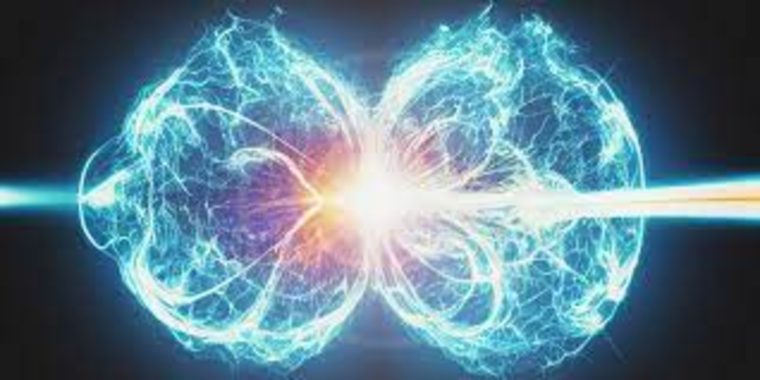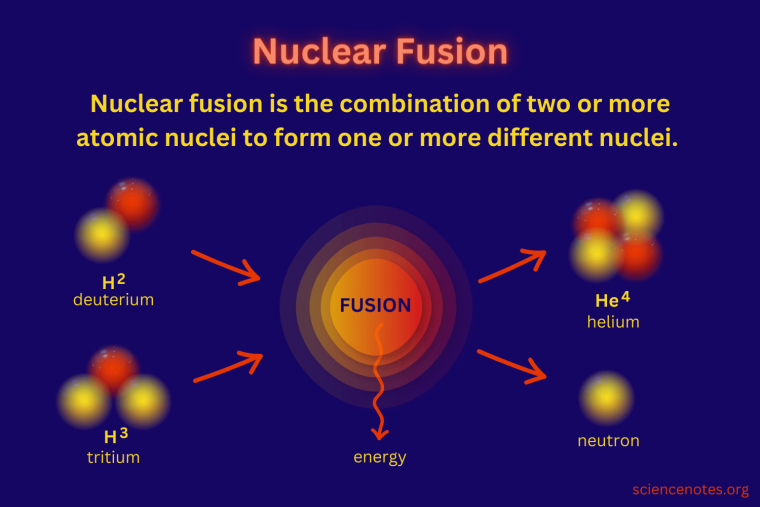
The search for a breakthrough in the coveted nuclear fusion sector has so far attracted $5 billion in private-sector investment. However, the Biden-Harris administration through the Department of Energy (DOE) has decided to pump an additional $46 million into eight fusion startups in a bid to speed up the development of “a pilot-scale demonstration of fusion,” expected in less than a decade.
“The Biden administration obviously sees enormous potential in fusion, harnessing the power of the sun and the stars right here on Earth to deliver affordable, abundant, reliable, clean energy,” Secretary of Energy Jennifer Granholm said during a video announcement.
What is Nuclear Fusion Energy?
Nuclear fusion is the process that releases energy by combining two small atoms into a larger one. It is the same process that powers the stars and the Sun (and thermonuclear weapons).
If nuclear fusion can be replicated on Earth efficiently, it could provide an abundant source of clean energy for the future, BBC reported last December when scientists in the US announced that they had overcome a significant barrier.
Nuclear fusion requires a ton of energy to get the reaction started and to maintain it for long periods.
Scientists involved in the research have been building machines that can create and confine a super-hot gas, or plasma, inside an absurdly strong magnetic field. This plasma can reach temperatures of over 100 million degrees Celsius.
The problem right now is that it takes almost as much (or more) energy to create fusion than the fusion produces.
The DOE believes that tremendous progress has been made so far and “It’s no longer a question of possibilities.” Advances in technology and material research are slowly making efficient fusion a reality and the United States wants to be at the forefront of what would be the century’s most significant invention.
“It’s a question of ingenuity and whether we can muster up the investment and the commitment that this challenge demands,” Granholm said in this week’s announcement.
DOE’s Milestone-Based Fusion Development Program
The eight startups selected for the fund have demonstrated varying approaches and innovations to curve a new path for the world using clean energy.
The awardees of the DOE’s milestone-based fusion program are Commonwealth Fusion Systems (CFS) in Cambridge, Massachusetts, which utilizes a tokamak – a ring-shaped device with powerful magnets.

Type One Energy in Madison, Wisconsin, with its stellarator, an incredibly complex twisted ring-shaped device. The company raised $29 million this week from investors led by Breakthrough Energy Ventures, TDK Ventures, and Doral Energy Tech Ventures.
Xcimer Energy in Redwood City, California, uses laser inertial confinement, the same technique that Lawrence Livermore National Laboratory used to generate “net energy gain” last year. This was the first time in history that a fusion reactor generated more energy from the reaction than it took to start and maintain it.
Other startups in the program include Princeton Stellarators Inc, Realta Fusion Inc, Zap Energy Inc, Focused Energy Inc, and Tokamak Energy Inc.
The funding which falls under the Energy Act of 2020 is expected to cover 18 months, but projects could extend up to five years. The DOE has the mandate to release up to $415 million to fund the program but this is on the condition that Congress approves and key engineering and scientific milestones are achieved.
“Participating companies only get paid if they deliver results and the public program verifies the science is sound,” said Bob Mumgaard, the CEO and founder of CFS.
According to a report by the Fusion Industry Association (FIA), combined private and government labs burnt through $500 million in pursuit of fusion plants that utilize lasers and magnets last year.

In a related report, Reuters said that the labs are planning on spending approximately $7 billion until their initial plants start operating, and possibly trillions of dollars mostly on high-quality steel, concrete, and superconducting wire in a developed industry, expected to be sometime between 2035 and 2050.
“I am proud to support funding that blends the scientific and technological expertise of the Office of Science and its national laboratories with the innovative approach of the private sector.” U.S. Representative Chuck Fleischmann (TN-3) said. “This is a major step to developing commercial fusion energy that will transform how America meets its energy needs and make our nation the global leader in fusion energy science and technology.”
Although the Department of Energy selected eight companies from different states to take part in the program, the desire to win the nuclear fusion energy race is seeing competition from over 30 companies in the US alone, according to a White House fact sheet.
Microsoft invested an undisclosed amount in Helion Energy, a startup backed by OpenAI’s founder Sam Altman to produce for the tech giant at least 50MW of fusion energy by 2028.
While Helion’s timeline seems ambitious, Microsoft’s President, Brad Smith said that they are confident the startup will deliver, especially with “engineering advances gaining momentum.”
Related Articles:
- What is Green Energy Investing? Beginners’ Guide for 2023
- Is Music Streaming Profitable? Reigning King of the Industry Spotify Still Loses Millions Every Quarter
- VinFast Ditches IPO Plans and Decides to Go Public Through SPAC Route
What's the Best Crypto to Buy Now?
- B2C Listed the Top Rated Cryptocurrencies for 2023
- Get Early Access to Presales & Private Sales
- KYC Verified & Audited, Public Teams
- Most Voted for Tokens on CoinSniper
- Upcoming Listings on Exchanges, NFT Drops